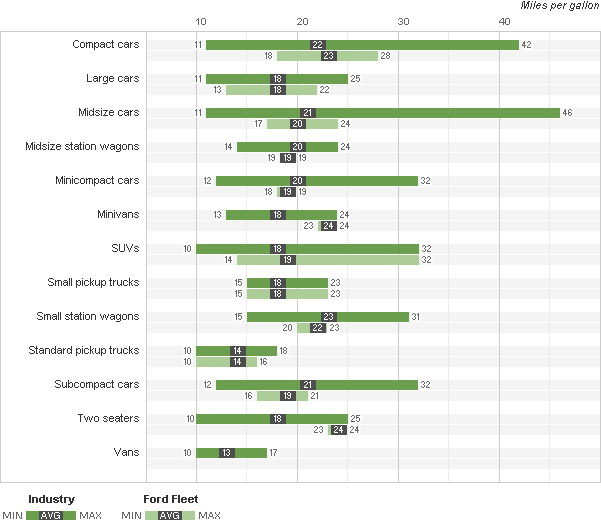Blueprint for Sustainability
In This Section
GHG Emissions Equation
Fuel
The use of renewable fuels can reduce GHG emissions attributable to vehicle use, provided that expanded land use for energy crops does not lead to excessive CO2 emissions from the replacement of native ecosystems. While current corn-based bio-ethanol production in the United States can provide a modest (approximately 20 to 30 percent) reduction in vehicle GHG emissions on a well-to-wheels basis, next-generation biofuels such as ligno-cellulosic bio-ethanol can offer up to a 90 percent GHG reduction benefit.1 Thus, building a substantial fleet of Flexifuel vehicles (FFVs) is a bridge to the widespread use of lower-carbon biofuels in the future.
We have been a leader in developing and deploying affordable technology that allows vehicles to use renewable fuels. In Brazil, we have produced 1.5 million vehicles with the ability to run on bio-ethanol. In the United States, we have produced more than 2 million FFVs since 1997 that can be fueled with either conventional gasoline or a blend of up to 85 percent bio-ethanol. We have committed to doubling the number of FFVs in our lineup by 2010. Assuming continuing incentives that encourage the manufacture, distribution and availability of renewable fuels and the production of Flexifuel vehicles, we stand ready to expand FFV output to 50 percent of total vehicle production by 2012.
In Europe, Ford is an FFV market leader and pioneer. The Focus and C-MAX FFVs are currently on sale in 17 European markets. Building on the success of its FFVs, Ford of Europe has announced it will extend its FFV range by offering FFV versions of the new Mondeo, Galaxy and S-MAX in early 2008. In addition, Volvo currently markets five FFV vehicles (the C30, S40, V50, V70 and S80).
Through Ford's range of alternative fuel vehicle technologies, as well as its low-CO2 conventional vehicle technologies (such as high-tech, clean-diesel technologies with among-best-in-class CO2 performance), our Company is offering one of the broadest low-CO2 vehicle portfolios in Europe today.
Alternative fuels pose a classic chicken-and-egg problem, however: automakers can produce a range of products to use fuels with varying carbon content, but the benefits are only realized if energy providers bring the fuels to market and consumers demand the vehicle and the fuel.
We are working with fuel producers and retailers to encourage the development of E85 infrastructure in the United States through projects such as the Midwest Ethanol Fuel Corridor. Ford is also engaged in two pilot projects in Europe to test the potential large-scale introduction of bio-ethanol and FFVs.
In the longer term, we believe that next-generation biofuels made from a variety of feedstocks, including agricultural wastes (particularly ligno-cellulosic material) will be an important part of the GHG emission-reduction equation and will help address concerns about current-generation biofuels, including the potential competition between food and fuel crops.
RELATED LINKS
- In This Report
- Ford.co.uk
- Volvocars.com
